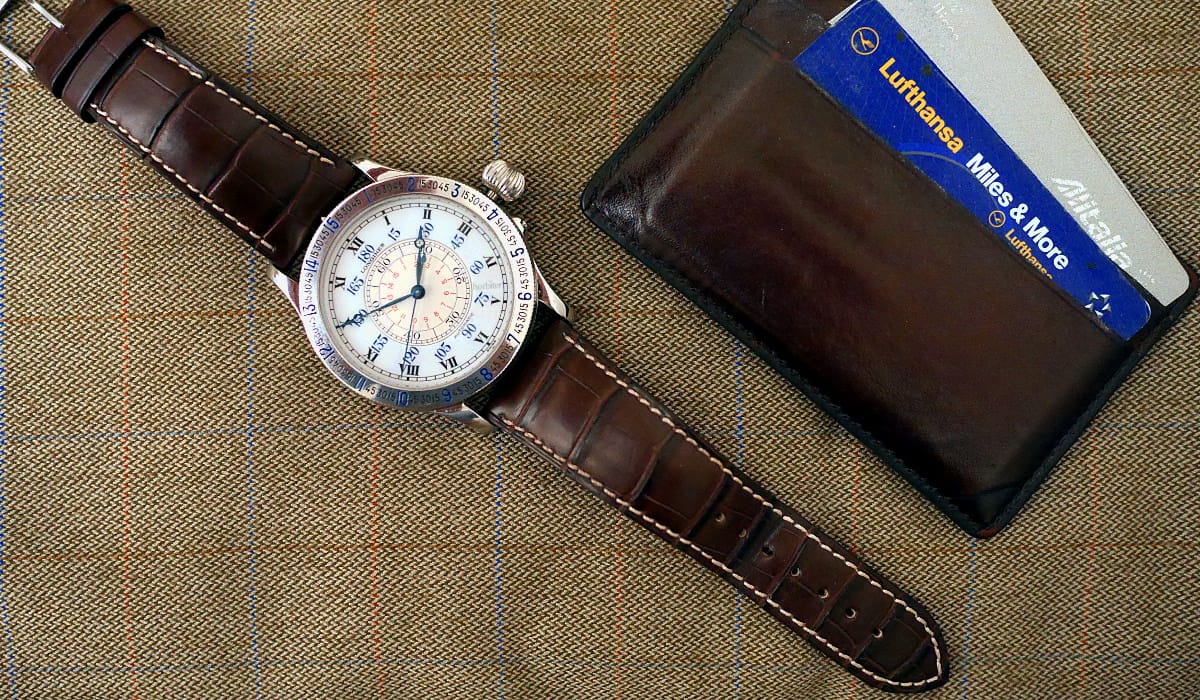Charles Lindbergh has been a legend in the field of aviation. Almost 100 years ago, in 1927 to be more precise, he was the first man, who completed a solo flight from New York to Paris. He was the man that inaugurated the history of modern transatlantic flights by ideally tying together America and Europe and by showing that flying over the Atlantic was actually an achievable task. This man occupies an important role in history and is also responsible for taking a significant step in the evolution of watch-making; a sector that, back in those days, meant measurement and navigation instruments that one couldn't do without as aviation was still in its embryonic phase and everything that nowadays allows us to move from point A to point B didn't exist yet.
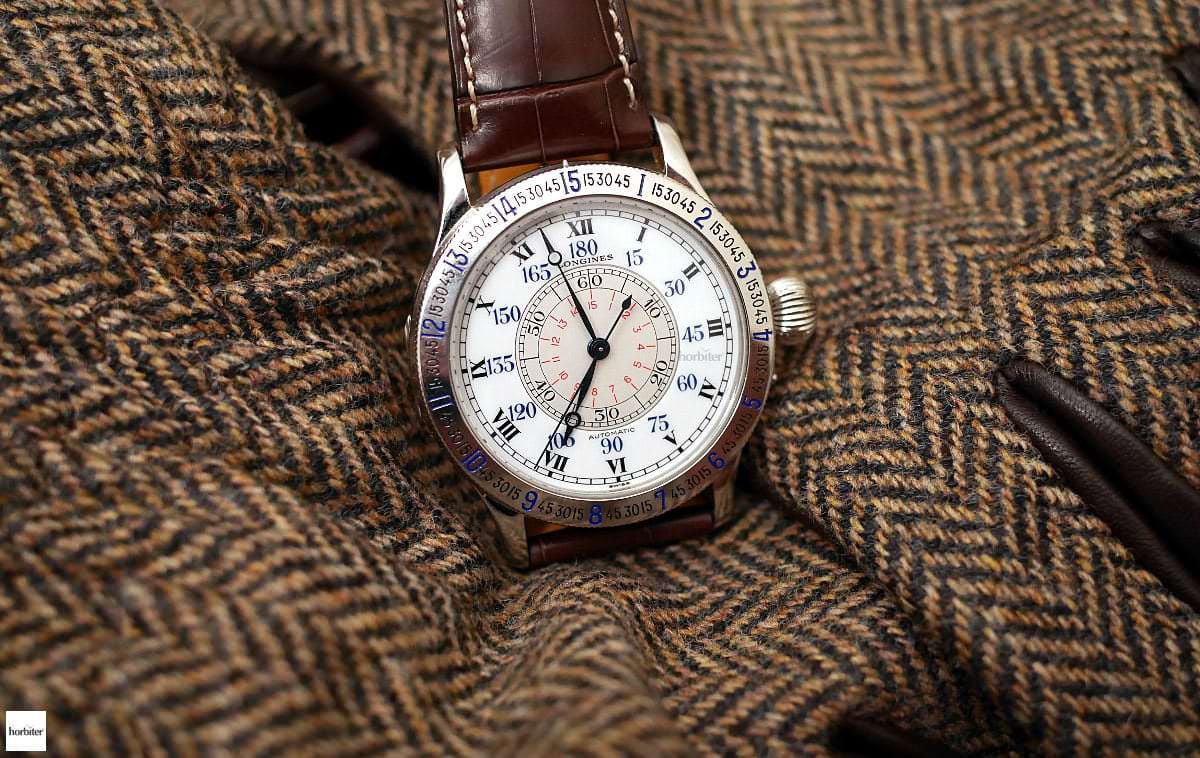 Longines in the 30s was a different company from the one that we know today; the brand was the reference point for all aviation pioneers. Broadly speaking, it had made exploration into one of its missions and its timepieces had been, since the end of the 19th century, quite renowned for their precision. In 1919, the International Aeronautics Federation chose the brand with the winged hourglass logo as its official provider, thus starting a partnership that paved the way for the development of exceptional navigation tool; a sector that really stands out within the theme-based areas of the St. Imier's museum that I visited last September.
Longines in the 30s was a different company from the one that we know today; the brand was the reference point for all aviation pioneers. Broadly speaking, it had made exploration into one of its missions and its timepieces had been, since the end of the 19th century, quite renowned for their precision. In 1919, the International Aeronautics Federation chose the brand with the winged hourglass logo as its official provider, thus starting a partnership that paved the way for the development of exceptional navigation tool; a sector that really stands out within the theme-based areas of the St. Imier's museum that I visited last September.
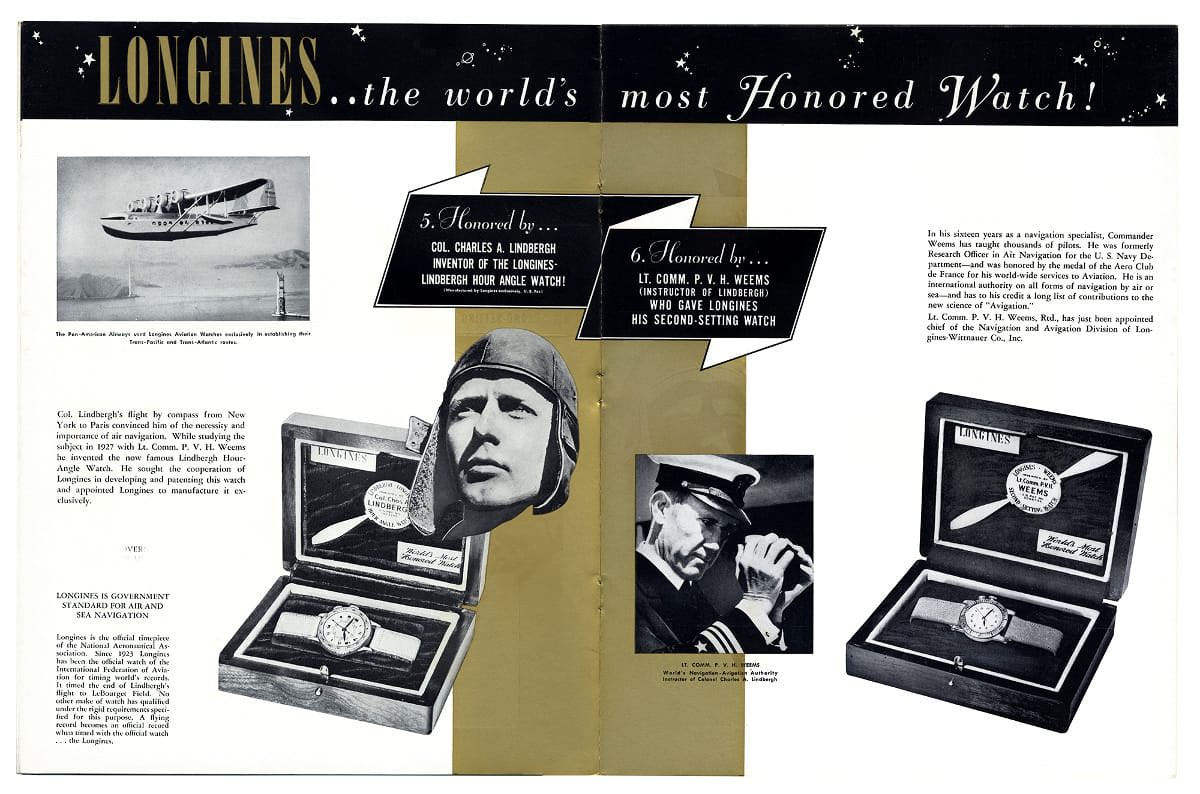 The Longines Heritage Lindbergh Hour Angle Watch and its predecessor (the Longines Weems Second-Setting Watch) represent the spirit of the brand and despite being two niche models among all the Longines collections today, they are the real essence of the manufacturer. A good part of the Heritage concept associated to the collection that we are familiar with nowadays, is due to the presence and the birth of these two masterpieces of watch-making.
The Longines Heritage Lindbergh Hour Angle Watch and its predecessor (the Longines Weems Second-Setting Watch) represent the spirit of the brand and despite being two niche models among all the Longines collections today, they are the real essence of the manufacturer. A good part of the Heritage concept associated to the collection that we are familiar with nowadays, is due to the presence and the birth of these two masterpieces of watch-making.
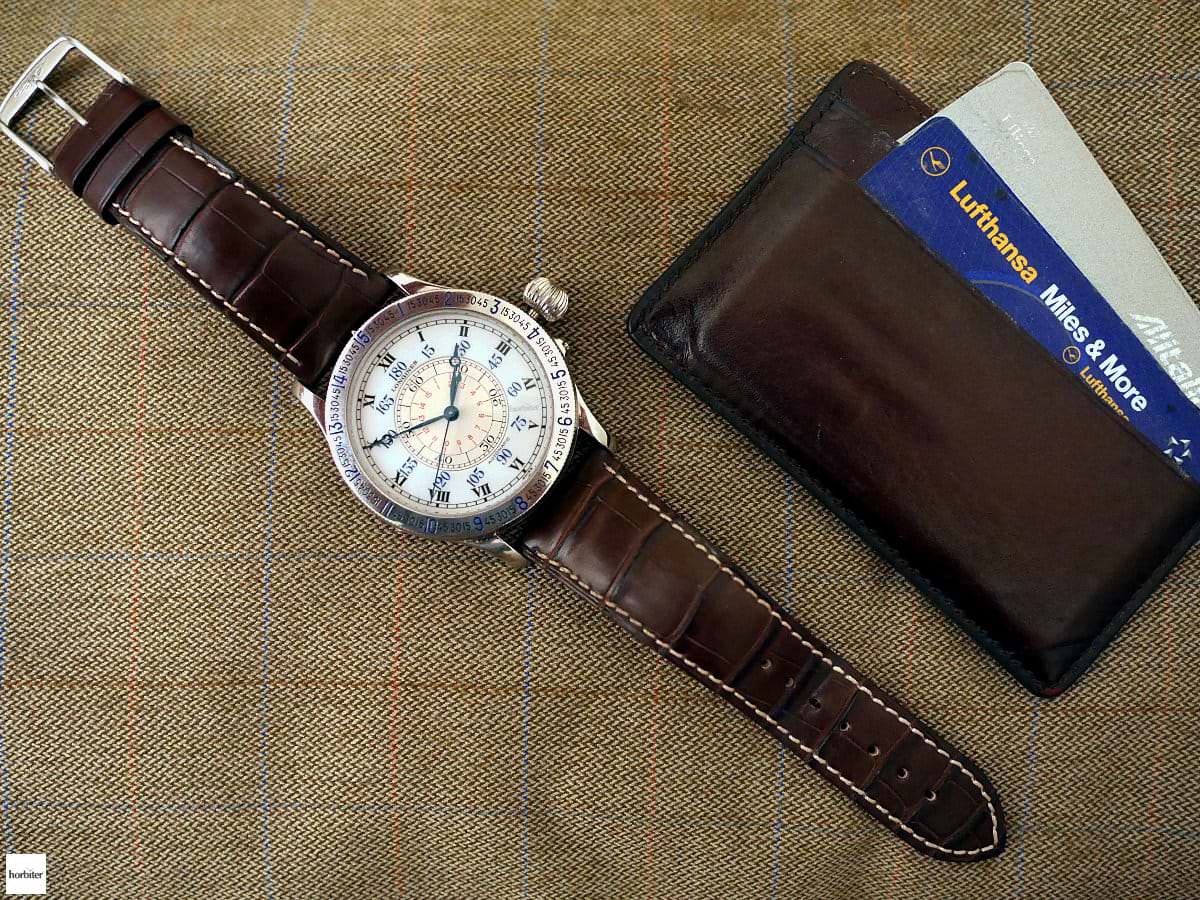 The Longines Heritage Lindbergh Hour Angle Watch was designed by Charles Lindbergh himself in 1931, once he was back from his historic flight but the working principle behind this timepiece is based on the studies of Commander Philip Von Horn Weems; a real authority in the world of the American aviation and the military navy of the time. Weems was a collaborator of Longines in the 20s and 30s and also a collaborator of Charles Lindbergh, the man who helped him create the new Hour Angle Watch, whose working principle was based on Commander Weems's theory. Charles Lindbergh took inspiration from the Weems Second–Setting Watch for his Hour Angle.
The Longines Heritage Lindbergh Hour Angle Watch was designed by Charles Lindbergh himself in 1931, once he was back from his historic flight but the working principle behind this timepiece is based on the studies of Commander Philip Von Horn Weems; a real authority in the world of the American aviation and the military navy of the time. Weems was a collaborator of Longines in the 20s and 30s and also a collaborator of Charles Lindbergh, the man who helped him create the new Hour Angle Watch, whose working principle was based on Commander Weems's theory. Charles Lindbergh took inspiration from the Weems Second–Setting Watch for his Hour Angle.
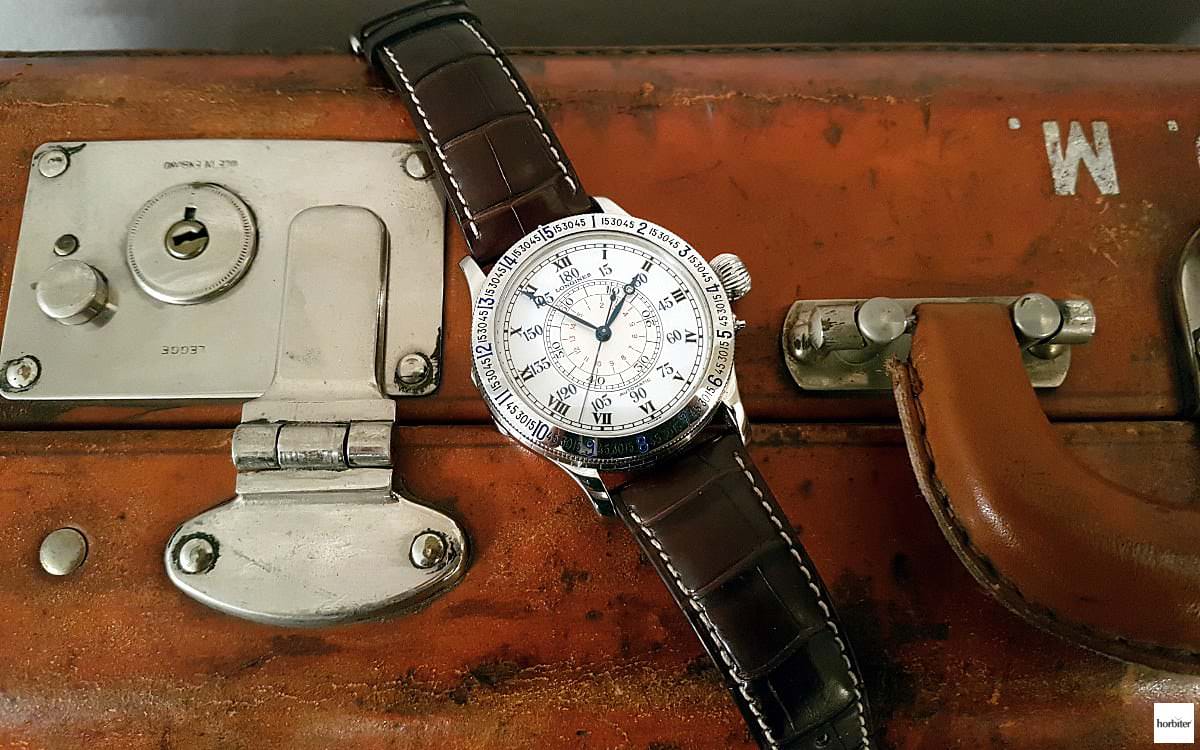 The biggest challenge back then was to find new methods to cruise the sky by relying on the only available instruments designed for sea navigation. This is the reason why it was a navy officer like Weems to study and extend the use of existing sea navigation instruments to air navigation; a field where finding your way is more complicated and a positioning mistake could mean ending up miles and miles away from your target and even resulting in a fatality as it used to happen quite often in the past.
The biggest challenge back then was to find new methods to cruise the sky by relying on the only available instruments designed for sea navigation. This is the reason why it was a navy officer like Weems to study and extend the use of existing sea navigation instruments to air navigation; a field where finding your way is more complicated and a positioning mistake could mean ending up miles and miles away from your target and even resulting in a fatality as it used to happen quite often in the past.
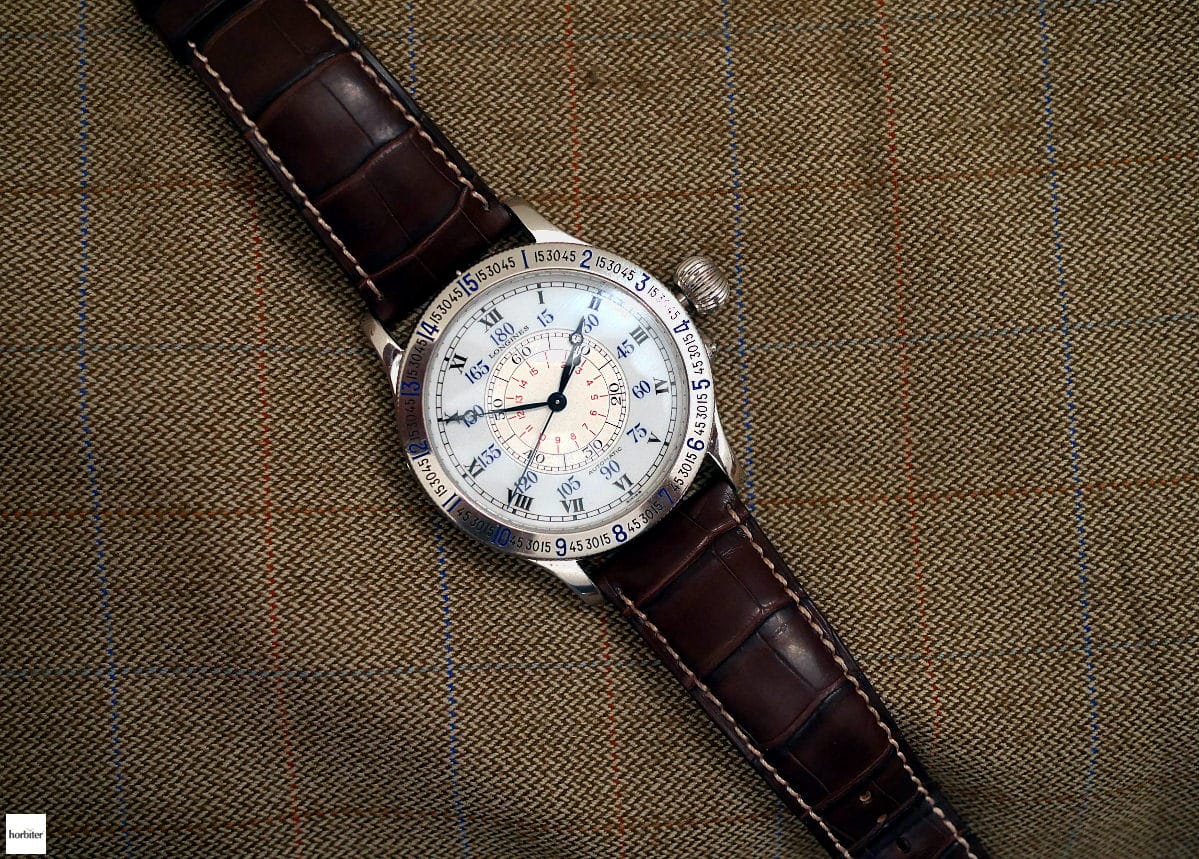 The Longines Heritage Lindbergh Hours Angle Watch used with a sextant and a nautical almanac, helps the wearer calculate at a glance the hour angle from Greenwich, else said the longitude of a certain point. Time and hour angle are both showed on dial and bezel. The rotating central dial is the same used on the Longines Weems Second–Setting Watch and helps synchronise the watch with a time signal while the bezel can be rotated to correct the equation of time.
The Longines Heritage Lindbergh Hours Angle Watch used with a sextant and a nautical almanac, helps the wearer calculate at a glance the hour angle from Greenwich, else said the longitude of a certain point. Time and hour angle are both showed on dial and bezel. The rotating central dial is the same used on the Longines Weems Second–Setting Watch and helps synchronise the watch with a time signal while the bezel can be rotated to correct the equation of time.
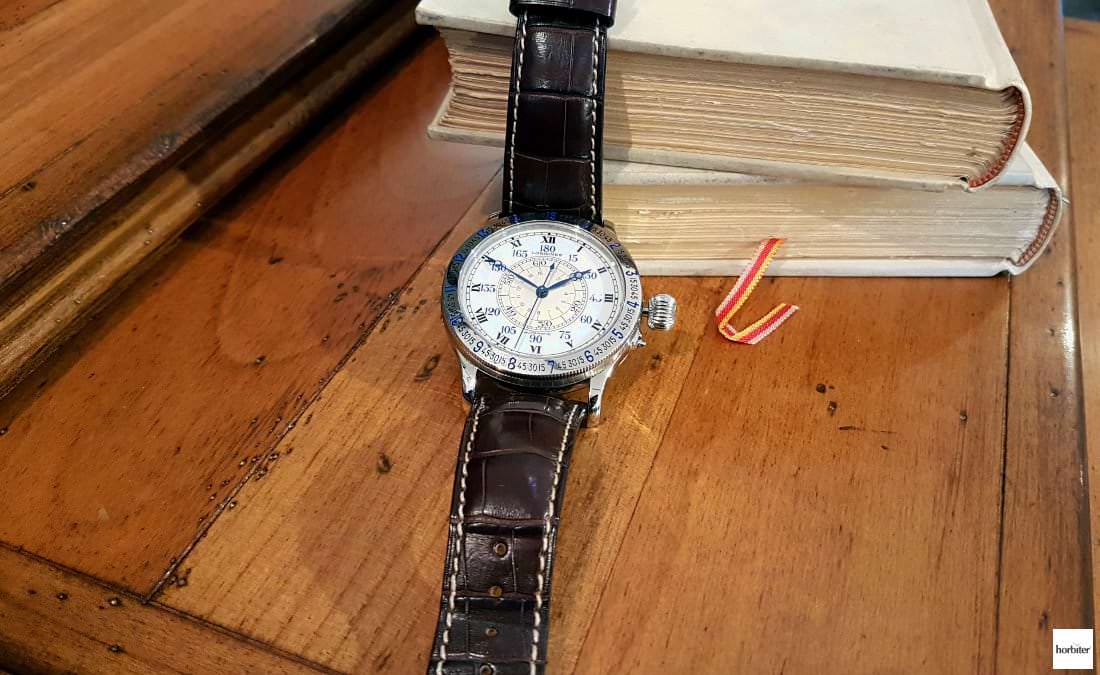 The whole watch is a translation of hours, minutes and seconds into hour angle and the other way round. The markings on dial and bezel keep into account for example that the Earth revolves through 360° in 24 hours, through 180° in 12 hours, through 15° in 1 hour and through 15’ of arc in 1 minute. Hence every hour change represents 15°. One complete circle of the dial (12 hours) is equivalent to 180°. The minute hand indicates 1° per 4’, in other words 15° per hour. Each of the 15° is subdivided into four sectors of 15’ of arc.
The whole watch is a translation of hours, minutes and seconds into hour angle and the other way round. The markings on dial and bezel keep into account for example that the Earth revolves through 360° in 24 hours, through 180° in 12 hours, through 15° in 1 hour and through 15’ of arc in 1 minute. Hence every hour change represents 15°. One complete circle of the dial (12 hours) is equivalent to 180°. The minute hand indicates 1° per 4’, in other words 15° per hour. Each of the 15° is subdivided into four sectors of 15’ of arc.

The modern
Longines Heritage Lindbergh Hour Angle Watch is the perfect re-edition of the original model designed by
Lindbergh (and subsequently patented). The timepiece sports a large
47.50mm case and it comes as no surprise since these watches used to be worn both on mundane occasions and on battle fields, on top of a double overall or a leather jacket. The
bezel and the
central disc that are needed to carry out the corrections are bi-directional and, on the dial, are the same
Breguet hands as the original model.
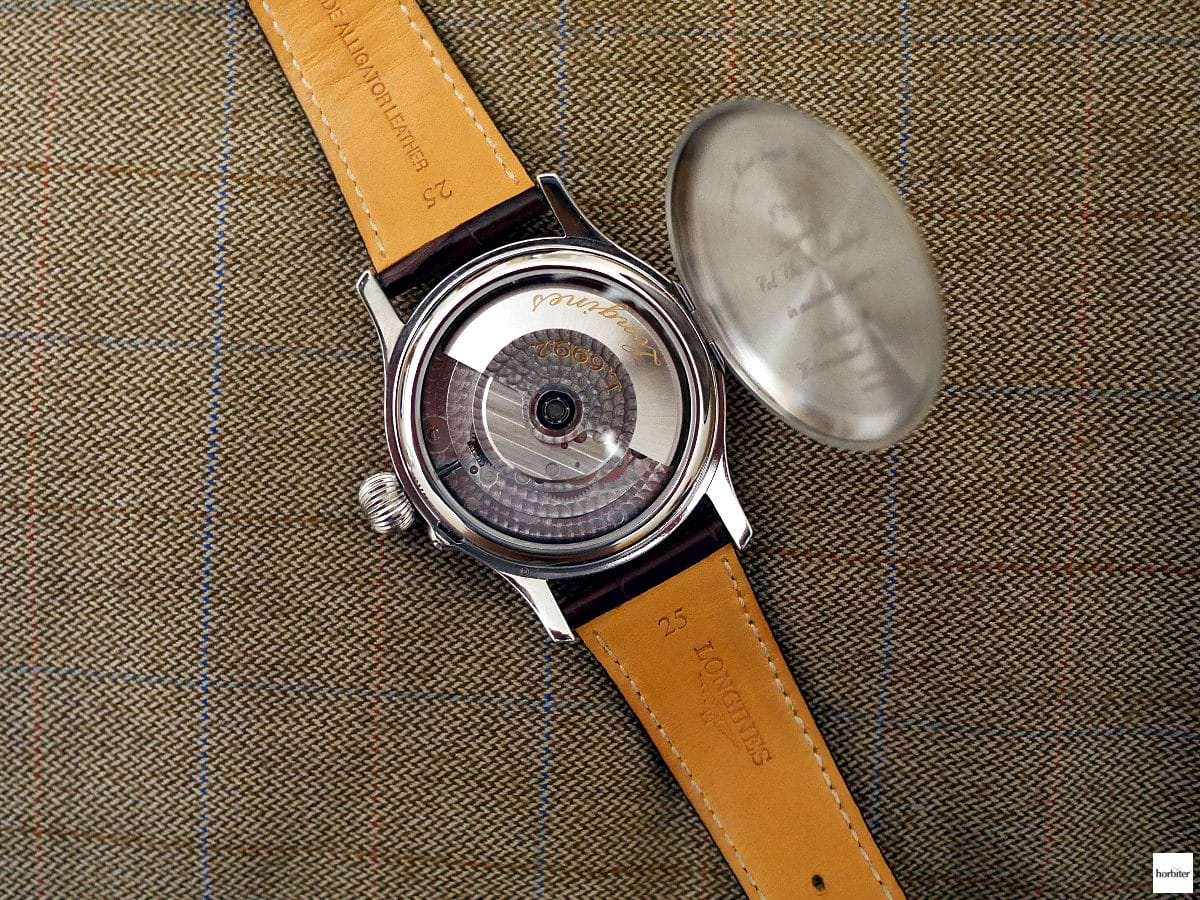
The current
Lindbergh with its big central seconds hand could ideally be used as a navigation instrument even today. On the case-back, the historic logo of the brand is engraved and, by pushing a small button on the case, you can open the timepiece and behold the
L699.2 caliber and the inner engraving that pays tribute to
Charles Lindbergh; the man who conceived this timepiece.
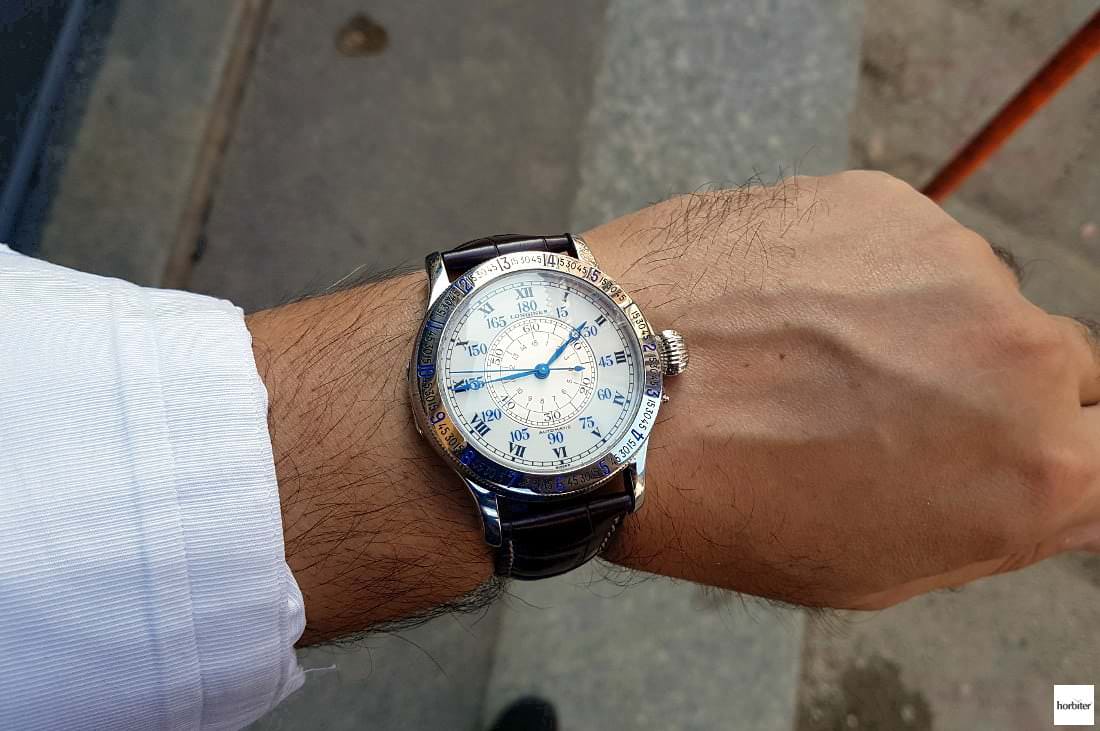
In my opinion, nobody purchases a
Lindbergh Hour Angle simply because they know how much this timepiece is worth from a historical point of view, and I believe you would need many pages to completely describe the evolution and history of a three-hands-watch that is involved in the history of aviation. It represents one of the biggest challenges that a human being has ever completed and a man, who managed to link together two worlds that seemed impossible to reach. The
Longines Lindbergh Hour Angle Watch is the brand's testament and that's why
Longines has left it as it was – mechanics excluded – until today, and I am sure that it will leave it like that for the next 100 years. This is a piece of history from the 20
th century and of today's contemporary times that you can get your hands on for about
4,700 euros.
(Photo credit: Horbiter's proprietary photo-shooting)
Gaetano C @Horbiter
@Gaetano Cimmino
